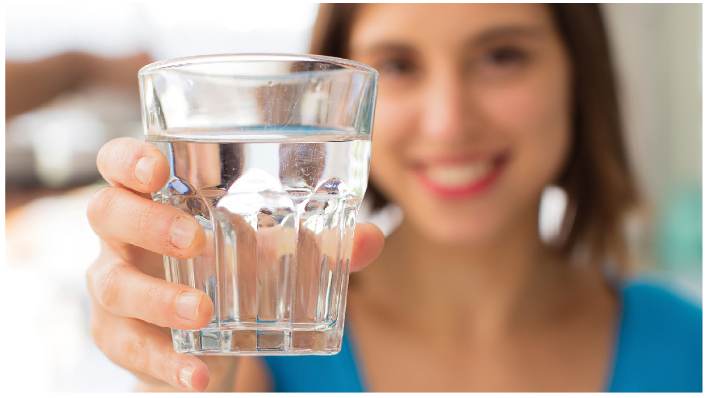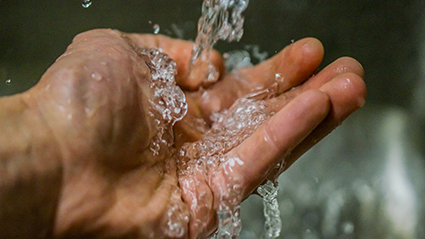
10 COMMITMENTS AS CLEAR AS MADRID'S WATER
As we want to speak to you clearly and offer you more solutions for your needs, we have taken another step in our relationship with you. We assume 10 commitments with which to continue providing you with a quality, fair and transparent service. 10 commitments as clear as the water of Madrid.
CANAL IN 60 SECONDS
The care of our rivers begins in thewaste water treatment plants and continues in our laboratory in Majadahonda, where we analyze the water that we return to the rivers. Julio Rodrigo explains what the analysis of treated waste water consists of and why it is so important for the environment.
COMMITED TO SUSTAINABILITY
In 2021, the year of our 170th anniversary, we promoted environmental care from all our activities. This year, we continue working to keep guaranteeing the water supply, contributing to the protection and improvement of the environment, the promotion of the circular economy and the sustainability of the region.
Canal de Isabel II participates in the UN’s water and energy platform
Back Canal de Isabel II participates in the UN’s water and energy platform
Canal de Isabel II participates in the UN’s water and energy platform
2020-10-23

Solar energy, natural gas fuelling stations and the production of reclaimed water are some examples of its sustainability strategy
- It has presented its sustainability projects in a panel alongside representatives of Brazil, Paraguay, Bangladesh and Guatemala
- Its ‘0 Kilowatts’ Clean Generation Plan seeks to achieve 100 % self-consumption with renewable or high-efficiency energy
The public company has established a clear strategy in line with the Sustainable Development Goals and the Paris Agreement on the decarbonisation of the economy in the European Union, and whose contribution to them is being measured using key performance indicators for each of the projects initiated.
As regards clean energy generation, Canal de Isabel II has been the company with the greatest installed capacity in electrical energy generation in the Region of Madrid for years, with a total of 107 megawatts. Moreover, through the ‘0 Kilowatts’ Clean Generation Plan, the company seeks to achieve 100 % self-consumption with renewable or high-efficiency energy in 2030.
Likewise, Canal has facilities which, alongside they supply and sanitation processes, make it possible to generate renewable energy, obtain energy from by-products of the processes and co-generate electricity. Notable projects include natural gas fuelling stations, which exploit the biogas from the purification plants as fuel for automotion, or the floating solar panel installation project.
Another of the company’s major lines of action for the sustainability of the resource is raising awareness of the use of water through publicity campaigns. This must be seen alongside the efforts to reduce losses in the distribution network and the increase in the production of regenerated water. This latter process, by means of a tertiary treatment, makes it possible to give the wastewater sufficient quality to irrigate public green areas, golf courses, washing down streets and industrial uses.
Canal has 31 tertiary treatments in which it produced, in 2019 alone, 122 million cubic metres of reclaimed water, of which almost 16 were used to irrigate more than 2,800 hectares in 24 municipalities in the Region of Madrid, thanks to a distribution network more than 650 kilometres long. This quantity is equivalent to one-and-a-half times the volume of the Navacerrada reservoir, or fifty times the volume of the Picasso Tower.
Finally, some of the actions Canal has undertaken as a result of the COVID-19 pandemic were also presented, highlighting the company’s quick action to guarantee the water supply at all times, protecting all the workers’ health and safety. In this regard one of the most noteworthy projects is the ‘Vigía’ system, which tracks the presence of the virus in the Region of Madrid’s wastewater thanks to the implementation of more than 290 sampling points distributed around the sanitation system, which amounts the largest deployment of this type in the country.
Canal de Isabel II was founded more than 165 years ago to supply water to the city of Madrid. Today, its more than 2,800 employees provide a service to over 6 million people in the region. It is an innovative, entirely public company, a leader in its sector, and internationally recognised for its management of the integrated water cycle.
It operates 13 reservoirs; 78 spring tappings; 14 drinking water treatment plants; 17,651 kilometres of conveyance and distribution channels; 131 pumping stations for drinking water and 133 for wastewater; 15,317 kilometres of sewage networks; 65 storm tanks; 157 wastewater treatment stations; and 651 kilometres of regenerated water channels.

10 COMMITMENTS AS CLEAR AS MADRID'S WATER
As we want to speak to you clearly and offer you more solutions for your needs, we have taken another step in our relationship with you. We assume 10 commitments with which to continue providing you with a quality, fair and transparent service. 10 commitments as clear as the water of Madrid.
CANAL IN 60 SECONDS
The care of our rivers begins in thewaste water treatment plants and continues in our laboratory in Majadahonda, where we analyze the water that we return to the rivers. Julio Rodrigo explains what the analysis of treated waste water consists of and why it is so important for the environment.
COMMITED TO SUSTAINABILITY
In 2021, the year of our 170th anniversary, we promoted environmental care from all our activities. This year, we continue working to keep guaranteeing the water supply, contributing to the protection and improvement of the environment, the promotion of the circular economy and the sustainability of the region.
